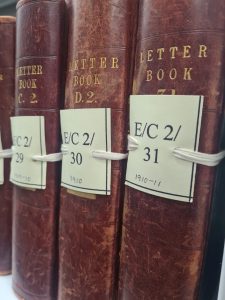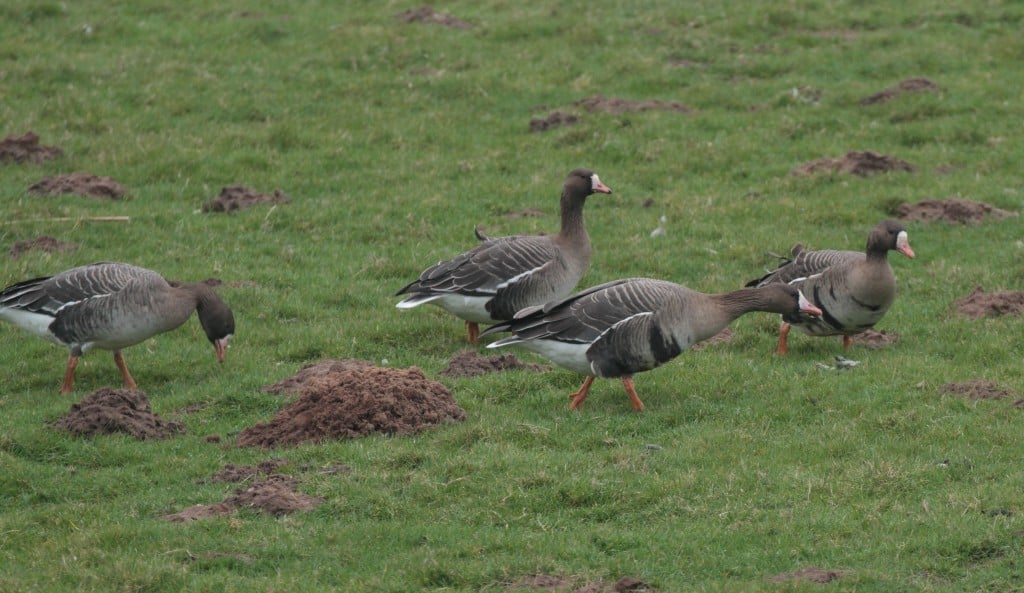
Cries of the Laughing Goose
January 27, 2019 | Learning | 5 minute read

White-fronted Geese arrive at Holkham every winter from the north of Russia
Of all our winter wildfowl that descend here every year it is the White-fronted Goose that traditionally attracts most attention from visiting birdwatchers. This smaller relative of the common feral Greylag Goose appears annually in Norfolk at only a handful of regular sites and the marshes of Holkham have long been famed for attracting a flock. Unlike the more numerous Pink-footed Geese that arrive in their tens of thousands each autumn from breeding grounds in Iceland and Greenland, White-fronts (as they are more commonly referred) appear in much smaller numbers and are not quite as predictable in their timings.
With Pinkfeet it seems as soon as the first week of September is upon us then the first flocks begin to return. With the White-fronts there might be a few start to appear in October one year but in another they not be seen until November, or even December. Whitefronts winter in far larger numbers in Holland and sometimes it takes hard weather there to force them to move across the North Sea. In the past we have seen as many as 800 appear after the New Year in exceptional years but ordinarily as many as 250 would be deemed the norm. This winter we have only just managed to reach 190. Of great interest last winter we actually saw a bird bearing a neck ‘collar’, a form of banding with unique inscriptions, administered to identify specific individuals after having been caught and then released in Holland.
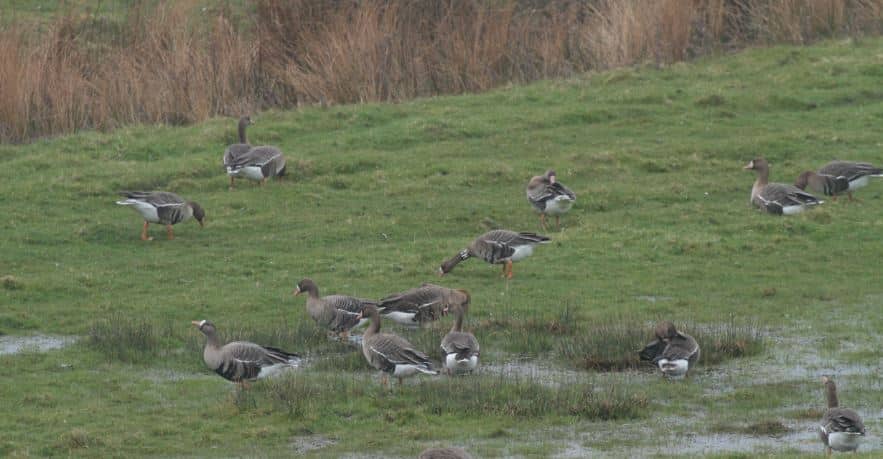
A typical flock of White-fronted Geese in the fields at Holkham. Note the neck collared bird in the centre from Holland
Our Whitefronts nest in the High Arctic of eastern European Russia and north-west Siberia and winter primarily on wet lowland grassland such as Holkham here in England but on the continent it is the Dutch farmland and great swathes of eastern Europe’s open steppe and agricultural fields that are favoured by the bulk of the population. Here at Holkham they tend to stay on the grazing marshes within the reserve although they seem to have spells of favouring different spots. Ordinarily they seem to like the least disturbed areas, way out of the reach of people. Burnham Overy’s marshes were favoured in the 1980s but nowadays it is fields that can be viewed from the Jordan Hide where a sighting is just about guaranteed. In the interim period in the late 1990s, the flock moved to the fields of Lady Anne’s Drive where they became uncharacteristically tame allowing visitors to the reserve to gain fabulous and what would these days be deemed unprecedented views. Quite what triggers a change of location is not known although it does seem that drier fields within our wetland complex are favoured.
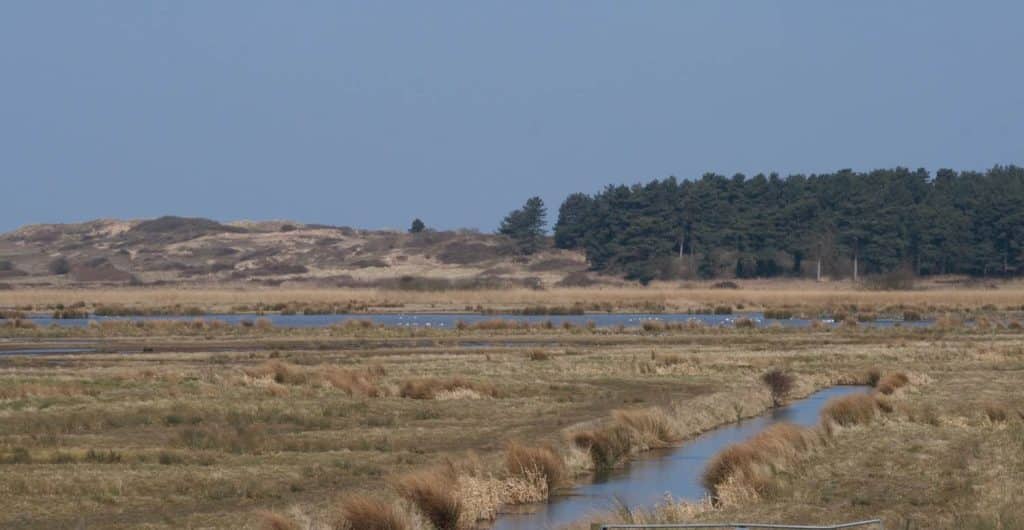
The grazing marshes at Holkham in the winter, home of the White-fronted Geese
An adult Whitefront is a striking looking bird; it has a white band (which gives it its name) around the base of its vivid pink bill whilst its grey plumage is enlivened by a series of velvet-like black bands around its belly. Both the black of its belly and the white around its bill are marks of maturity, yet often vary between individuals and are completely lacking in their youngsters.
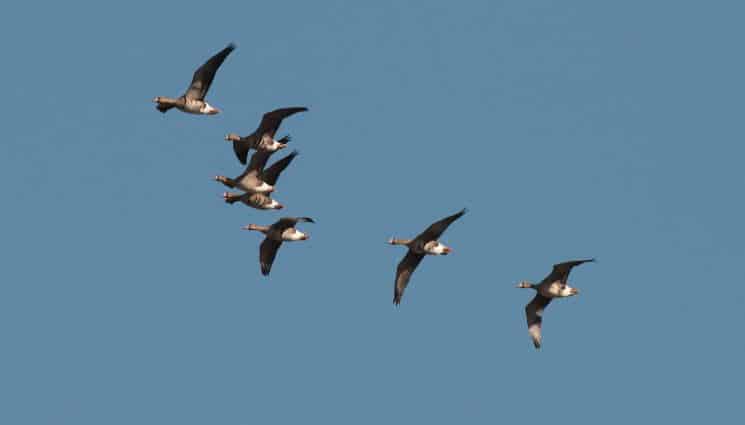
Even in flight the black belly bars of the adults can clearly be seen
In December we had another very fortunate moment when a Greenland White-fronted Goose appeared amongst the Pinkfeet on the fields beside Lady Anne’s Drive. As its name suggests it originated from the far north in Greenland (where the Pinkfeet also breed) and it is actually a very rare bird here in Norfolk. It differs from the more common Russian birds in having a darker plumage and a larger bright orange bill. That population ordinarily spends the winter in North West Scotland and Ireland but the odd lost stray bird appears here with its more numerous neighbours. Even more interesting was that this winter’s bird had a neck collar. It turned out that it been caught and ‘collared’ in Wexford, Ireland in March 2017 and had not been seen subsequently. It was also notable as being the first ever collared bird to be seen here in Norfolk.
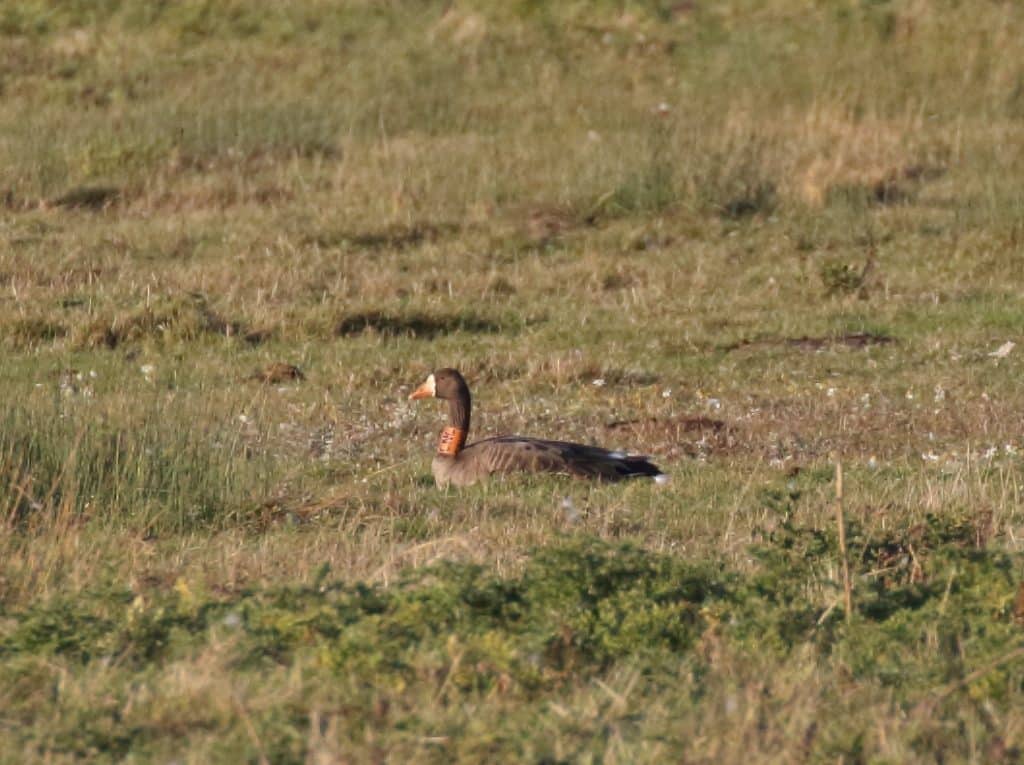
The first Greenland White-fronted Goose to be seen in Norfolk bearing a neck collar
Another very striking feature of the White-fronted Goose is its voice. It has a high pitched almost yodeling-like call. Some have likened it to laughter and hence it gained the old Norfolk name ‘the laughing goose’. On some still days when a flock are busy feeding on the marsh a sudden unexplained moment of panic might seemingly cause all the birds to begin calling. It can be a quite a surreal moment for some people, a distant maddened laughter drifting across from the emptiness of north Norfolk’s marshes. On misty days when their calls cut through the air we are often asked ‘just what is that strange noise?’!
View all latest blog posts here.
Back to Journal Back to Journal




